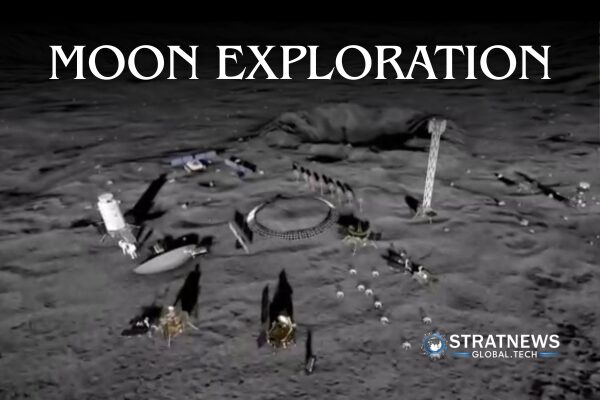China Eyes Moon’s South Pole with Chang’e Missions
China plans to launch its Chang’e-7 mission in 2026 to explore the moon’s south pole, focusing on environmental conditions and the potential presence of water. A follow-up mission, Chang’e-8, scheduled for 2028, will test advanced technologies for building lunar habitats using local resources.
Aiming for Lunar Water
Wu Weiren, chief designer of China’s Lunar Exploration Programme, shared the details in a recent interview with China Central Television. He confirmed that the programme, with a perfect success record over the past 20 years, is now entering its fourth phase.
The Chang’e-7 mission will search for signs of water ice within permanently shadowed craters at the moon’s south pole. If successful, this could transform lunar missions. Water on the moon could support human life by providing drinking water, oxygen, and even rocket fuel.
Wu explained that the moon’s south pole offers unique advantages for long-term exploration. Some areas receive nearly continuous sunlight for over 100 days. This makes them ideal locations for future human activity.
“This feature lays a foundation for human presence. If water is found, it would be a huge discovery and a historic milestone,” Wu stated.
Building Habitats with Lunar Soil
The next step, the Chang’e-8 mission, will test the practical use of lunar soil. The mission will include experiments in communication, energy generation, and building techniques. One key goal is testing how to construct a lunar research base.
China has developed a world-first system that creates bricks from lunar soil. The process uses sunlight concentrated through fibre optics to reach temperatures of 1400–1500°C, enough to melt the soil. The molten material is then shaped into bricks using 3D printing. These bricks could be used to build future lunar structures, reducing reliance on Earth-based supplies.
Wu highlighted that this approach marks a major step toward sustainable space exploration. It also opens the door for further international cooperation.
Global Collaboration on the Horizon
China’s International Lunar Research Station has already attracted interest from countries including Egypt and Bahrain. Six foreign scientific payloads will travel aboard the Chang’e-7 probe.
Wu invited more international researchers and institutions to join China’s lunar efforts. He believes the International Lunar Research Station can become a key platform for the next stage of global space exploration.
“In the next 10 to 20 years, we should focus on this international station as the guiding point for expanding lunar exploration,” Wu added.
with inputs from Reuters


